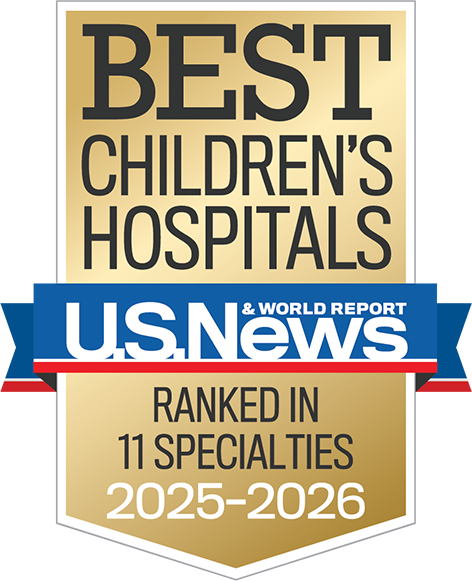The Pain Management Clinic treats both acute and chronic pain. Chronic pain is prolonged or occurring repeatedly for months, while acute pain begins suddenly and lasts less time than chronic. A team including nurses, physicians and other pediatric specialists review all aspects of your child's complex pain issues. They work together to develop diagnosis and treatment plans to increase your child's comfort and function in everyday life.
During a visit, your child will be evaluated by:
- a pain psychologist
- a physical therapist with special training in pain disorders
- nurse practitioners with specialized pain management training
- a physician trained in pediatrics, pain medicine and anesthesia
Treatment
Treatment of acute pain is often directed toward treating the cause of the pain, as well as using specific pain medications or nerve blocks. Supportive interventions such as parental comforting, massage, distraction, games and offering the child participation in their care are critical components in addition to pain medications. The primary aim of acute pain care is to reduce suffering while simultaneously avoiding serious side effects from pain medicines and interventions.
Treatment for chronic pain involves ensuring that no further bodily injury is present, then working toward greater function. Chronic pain is pain that persists long after the tissue injury would have normally healed and pain gone away. Causes vary and are sometimes related to ongoing medical conditions.
Pain medications used for acute pain are less helpful with chronic pain. When prescription medications are used, these medicines are often used for improving mood, reducing anxiety, and treating other side effects of the pain. There is rarely a completely effective direct medical treatment for chronic pain in the same direct way that acute pain responds to pain medicines. The primary aim of chronic pain care is to focus the patient on wellness behaviors, strive for increasing normal functioning despite persistent pain and using non-pharmacologic interventions to decrease pain, suffering and disability.
Each team member offers unique treatment approaches that can help in managing your child's pain.
During clinic visits, families will learn pain management skills, lifestyle modifications and functional goals for the patient.
Restoring the patient's everyday function is emphasized through physical and mind-based therapies. For the health and well-being of patients, the clinic offers integrative medicine -- treatments such as meditation and relaxation techniques.
Other services that may be offered depending on your child's needs include:
- Physical therapy
- Ongoing pain psychology evaluation
- Behavior modification
- Stress management
- Sleep improvement
- Reintegration to normal activities
- Return-to-school plans
- Medications for pain control
- Cognitive behavioral therapies such as biofeedback, relaxation, meditation and imagery
- Transcutaneous electrical nerve stimulation (TENS) therapy, which uses low-voltage electrical current for pain relief
- Nerve blocks, injections of medication near nerves to provide relief and comfort
- Aromatherapy, in which the oils of a plant are used to treat pain
- Comprehensive chronic pain education
- COMMIT program for children behind in educational development
Diagnoses managed by pain clinic staff include:
- Complex regional pain syndrome
- Widespread musculoskeletal pain
- Back pain
- Persistent post-surgical pain
- Pain associated with orthopedic and sports injuries
- Nerve-related pain and injuries
- Abdominal pain – functional and recurrent
- Pain associated with hypermobile joints, including Ehlers Danlos Syndrome
- Chronic headache, unresponsive to typical medications
- Pain associated with chronic illness such as arthritis, lupus or neurologic disease
- Children with physical dependence on pain medications needing to be weaned
Parent services
- Home exercise education
- Medical adherence education
- Counseling
Signs that your child is suffering from chronic pain
- Pain persists for three months or longer
- Missing school weekly or a few times a month
- Leaving school early regularly
- Disrupted sleep patterns
- Not participating in normal school activities or sports
Patient referrals
- The referring physician remains the primary clinician in the patient’s management. This keeps the home physician–patient relationship the center of care.
- The clinic will review consult requests made by phone or fax and help decide whether a clinic visit for the patient would be helpful.
Conditions We Treat
Related Programs & Services
We offer world-class care to children thanks in part to generous gifts from hundreds of people who have joined us in making health care better for all children. This philanthropic support enables us to fulfill our mission to do what's right for kids.











